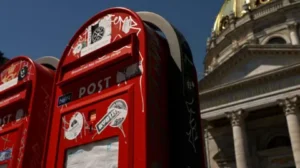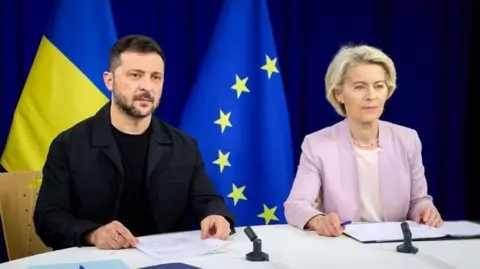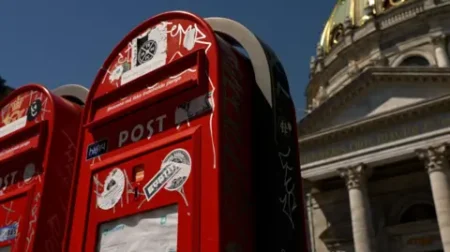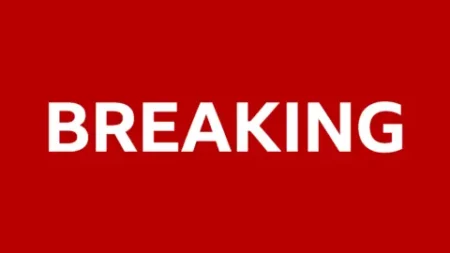In recent statements, former President Donald Trump asserted that Ukrainian President Volodymyr Zelensky holds the power to end the ongoing war with Russia, but he emphasized that Ukraine would not be permitted to join NATO as part of any peace agreement. This declaration comes just hours before Zelensky’s scheduled discussions at the White House, which include leaders from several European nations. Trump also reiterated the position that there would be no reclaiming of Crimea—the peninsula annexed by Russia in 2014—highlighting a stark posture that reflects his approach to negotiation and geopolitical realities.
Trump’s remarks followed his summit with Russian President Vladimir Putin in Alaska, where he shifted from previously insisting on a ceasefire to advocating for a more permanent peace deal. This change in narrative raises questions about the underlying strategy of the United States regarding its involvement in Ukraine, especially in light of ongoing Russian territorial ambitions in the region.
Adding to the complexities, a U.S. envoy indicated that Putin had indicated potential openness to a security arrangement for Ukraine reminiscent of NATO, a proposal that could serve as a compromise to the current standoff. Historically, Russia has opposed Ukraine’s NATO membership, interpreting it as a direct threat to its influence and security.
On social media platforms, Trump communicated his belief that President Zelensky could swiftly conclude the war if he chose to do so. However, he reiterated his firm stance against Ukrainian NATO membership: “no getting back Obama given Crimea… and NO GOING INTO NATO BY UKRAINE.” His rhetoric underscores the long-standing narrative about the historical origins of the conflict and the enduring complexities related to territories embroiled in this conflict.
As these discussions take place, NATO Secretary General Mark Rutte and key European leaders such as UK Prime Minister Sir Keir Starmer, French President Emmanuel Macron, and others are gathering for crucial talks in Washington. This collective diplomatic effort is aimed at addressing Ukraine’s future amidst the precarious landscape shaped by the war. Trump’s upcoming meeting with this group elevates the stakes, as it is uncommon for so many European leaders to convene in the U.S. on short notice, especially during such pressing wartime circumstances.
Sources indicate that certain diplomatic circles within Europe are wary of Trump potentially pressuring Zelensky into less favorable terms following his exclusion from the informal Trump-Putin discussions held recently. Nevertheless, U.S. Secretary of State Marco Rubio dismissed such concerns, describing them as an overblown “stupid media narrative,” emphasizing the complexities of negotiations which would require careful navigation of both Ukrainian and American interests.
The backdrop of these talks escalates further when considering Zelensky’s previous visit to the Oval Office, which ended contentiously after accusations were exchanged between himself, Trump, and Vice President JD Vance. Since then, European leaders have endeavored to repair the relationship between Kyiv and Washington, coaching Zelensky on how to communicate effectively with Trump, especially in terms that resonate with the American leader’s business-oriented mindset.
As the conflict continues to ravage Ukraine, Russian forces have seized significant portions of Ukrainian territory, and the urgent discussions between world leaders underline the dire need for resolutions to prevent further escalation. The interplay of diplomatic efforts, particularly after new propositions of security guarantees emerged from U.S. consultations, affirms the stakes involved as Trump and Zelensky meet.
Amidst talks of potential agreements featuring NATO-like security guarantees tailored for Ukraine, Zelensky has been adamant about not ceding any territory, a stance he solidified during a virtual summit with NATO’s coalition leaders, which includes promises of support once peace is reached. Secretary Rubio’s comments alleviate expectations for an immediate resolution, revealing that significant challenges still lie ahead in resolving a conflict marked by deep geopolitical divisions.












